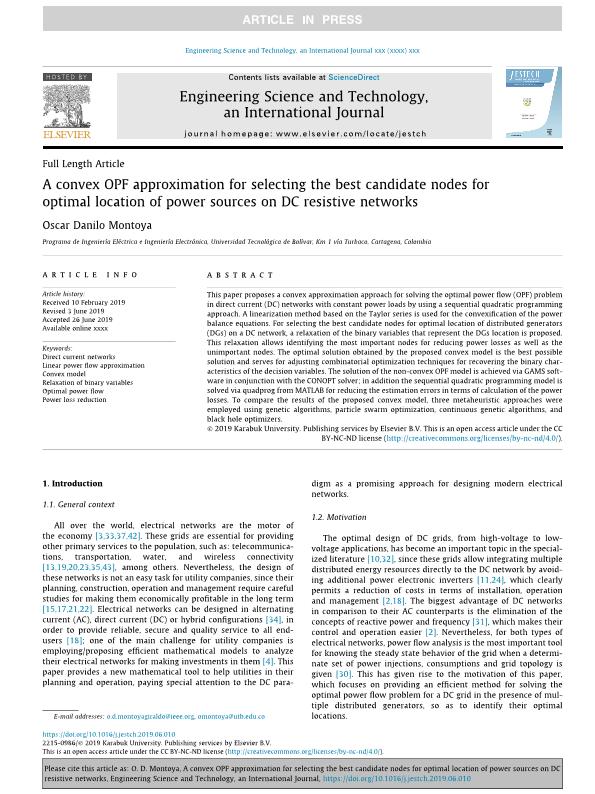Resumen
This paper proposes a convex approximation approach for solving the optimal power flow (OPF) problem in direct current (DC) networks with constant power loads by using a sequential quadratic programming approach. A linearization method based on the Taylor series is used for the convexification of the power balance equations. For selecting the best candidate nodes for optimal location of distributed generators (DGs) on a DC network, a relaxation of the binary variables that represent the DGs location is proposed. This relaxation allows identifying the most important nodes for reducing power losses as well as the unimportant nodes. The optimal solution obtained by the proposed convex model is the best possible solution and serves for adjusting combinatorial optimization techniques for recovering the binary characteristics of the decision variables. The solution of the non-convex OPF model is achieved via GAMS software in conjunction with the CONOPT solver; in addition the sequential quadratic programming model is solved via quadprog from MATLAB for reducing the estimation errors in terms of calculation of the power losses. To compare the results of the proposed convex model, three metaheuristic approaches were employed using genetic algorithms, particle swarm optimization, continuous genetic algorithms, and black hole optimizers. © 2019 Karabuk University














